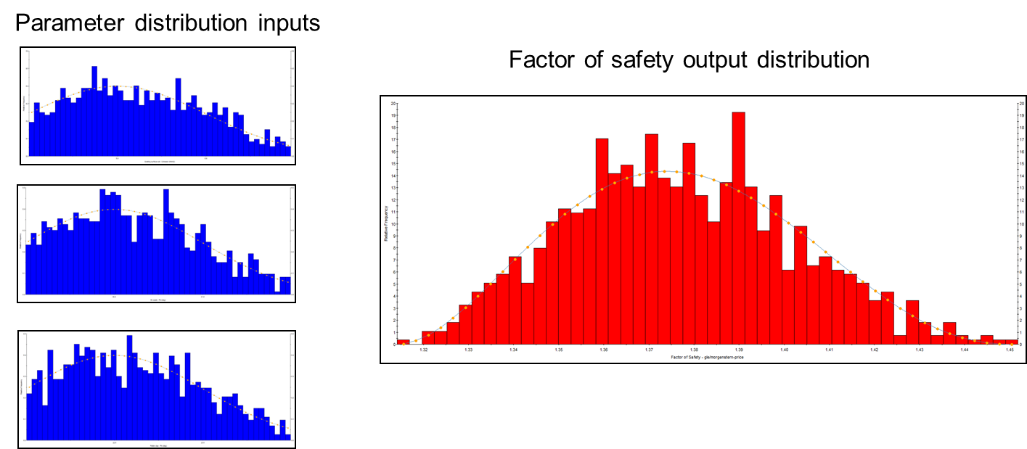Probabilistic design
The norms EN1997-1 allows to use the statistical methodology to perform slope stability. In this case, the geotechnical parameters of the model are considered as random variables (that is a variable to which a statistical distribution is attached). The deterministic methodology of the previous approach thus switches to a probabilistic concept.
The single values of the actions and the geotechnical parameters are now expressed in the form of predefined PDF’s (Probability Distribution Function). The type of statistical distribution chosen, together with the statistical parameters of the distribution (mean, standard deviation, minimum and maximum values), define the PDF for the random variable. Many statistical distributions can be taken into account like normal, uniform, triangular, exponential etc.
Pollux Consulting invests significant time to choose the proper parameter range of variation and the proper PDF for each singular parameter (friction angle, cohesion, load magnitude etc.). This is where experience yields true value.
As direct consequence of this approach, the main result is not a single value of the factor of safety but a probability distribution.

The picture above shows on the right an example of PDF’s for 3 parameters and on the right, the corresponding normal distributed factor of safety distribution.
The main response regarding the safety level of the slope therefore can be quantified by statistical index like the probability of failure, defined as the ratio of the number of analyses with factor of safety less than 1 to the total number of analyses, and the reliability index.